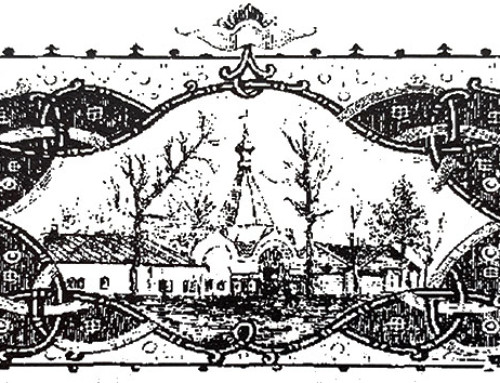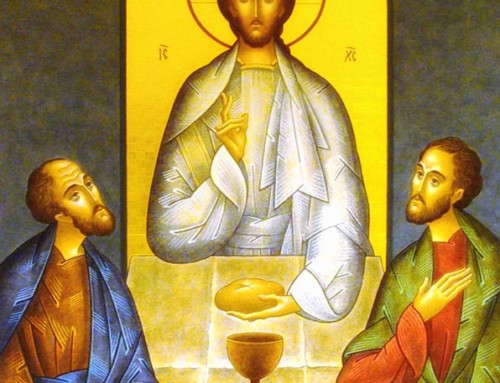#8 The Great Entrance, and Aitesis
The expression “great entrance” is perhaps somewhat misleading. Originally the offerings of bread and wine were set out somewhere other than the sanctuary—usually in a chapel in the vestibule of the church or even in a separate building, like the classical baptistery. Nowadays the gifts are prepared and left on a small table inside the sanctuary, and the clergy carry them to the Holy Table in a stylized procession out the deacon door and back in through the royal doors, mimicking the old carrying of the gifts in through the church. Once the bread and wine are set on the Holy Table they are covered while selected psalm verses and prayers are said, and a then a dialogue between the leader of the service and the deacons and/or concelebrating priests takes place. This is followed by another litany which may be omitted by Ukrainians today—the so called aitesis (“supplication”) litany, characterized by the refrain, “Grant it, O Lord.” In fact, in the official service book, this litany is prescribed to be recited twice during the service, once when the gifts are set on the Holy Table and then again before the Lord’s Prayer. The fact that this litany was repeated twice in close succession may be a remnant of the dismissal of different classes of people who would not be receiving Holy Communion, since the aitesis litany belongs to the conclusion of Matins (morning prayer) and Vespers (evening prayer), and may have migrated into the Eucharistic Liturgy from there for this very reason, i.e., “ending” the service for some subgroups in attendance. Note that the very first petition by the deacon (called in Greek the plerotika) is the injunction, “Let us complete our prayer to the Lord!” But the two prayers definitely refer to the impending Eucharistic Mystery, and have a very penitential tone. Yet the prayers may not be limited simply to the Mystical Rite that will be repeated within minutes, but also to future opportunities to join in that Mystery. On any given day, one may not be able to receive Communion at that Liturgy (one may not have kept the prescribed fast, etc.), but one may still look forward to it on a day yet to come.
#8 “Bеликий вхід”
Вираз “великий вхід”, мабуть, дещо помилковий. Спочатку жертви хліба та вина приносилися в іншому місці, але не у святилищі, як правило, в каплиці, в церковному притворі, або, навіть в окремій будівлі, подібної до класичного баптистерію. На сьогодні дари готуються і залишаються на невеликому столі всередині святилища, а священики несуть їх процесійно до вівтаря через дияконські двері, знову входячи через царські двері, тим самим імітуючи cтародавній звичай приносити дари до церкви. Коли хліб та вино приносяться на вівтарний стіл, вони покриваються під час читання псалмів та молитов, а потім відбувається діалог між тим, хто очолює богослуження: дияконами та священиками, які співслужать. Після цього є інша єктенія, яку сьогодні оминають – так звана прохальна єктенія, яка характеризується приспівом: “Подай, Господи”. Фактично, в офіційній богослужбовій книзі, ця єктенія є приписана для читання двічі під час богослуження: коли дари встановлені на престолі, а потім знову перед Господньою молитвою. Той факт, що ця єктенія повторюється два рази послідовно, міг бути в результаті відходу різних класів людей, які не приймали Святого Причастя, оскільки ця єктенія належить до завершальної частини Утрені (ранкової молитви) та Вечірні (вечірньої молитви) і, можливо, була перенесена в Євхаристійну Літургію саме з цієї причини, тобто на “закінчення” богослуження для деяких вірних. Зверніть увагу, що перше прохання диякона (назване на грецькій мові плеротикою) є закликом: “Давайте завершимо нашу молитву Господеві!” Але ці дві молитви однозначно відносяться до майбутньої Євхаристійної Таємниці і мають покаянний дух. Проте молитви не можуть бути обмежені лише Містичним Обрядом, який буде відбуватися протягом наступних хвилин, але відносяться до можливості стати учасником цієї Таємниці. Можливо дехто не прийняв Св. Таїнств на цій Літургії через недотримання Євхаристійного посту, але може це здійснити ще на наступний день.



